ODN Optical cable lines from the business convergence point to the users are mainly divided into 4 sections: backbone, wiring/distribution, introduction, and home segment, as shown in Figure 1. These fiber optic cable lines are aggregated on a plane (communications pipe or communication pole) to form a complex network.

Backbone Section
The backbone section refers to the section from the business convergence point to the backbone optical cable cabinet (hereinafter referred to as “cabinet”), and between the trunk cables. The cabinet is the interface device of the optical cable, which can connect, separate and adjust the core of the optical cable entering the box. The network structure of the backbone cable can be a ring type or a tree type. Whether it is a ring or a tree, some (or all) of the fiber cores in each backbone cabinet can directly reach the service convergence point (central office). Therefore, the backbone cabinet is also called a first-level cabinet. The network structure of the backbone optical line is shown in Figure 2.
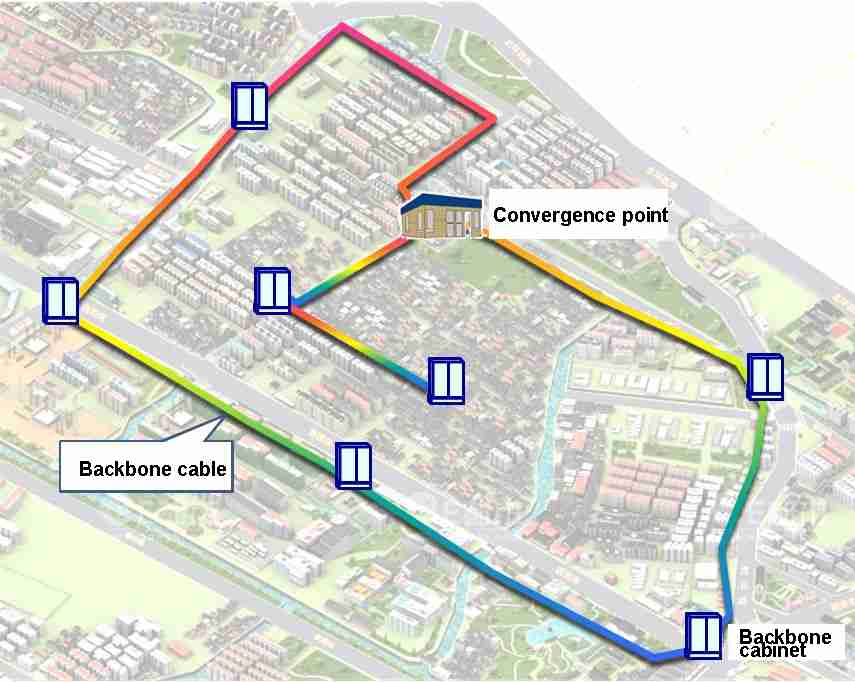
Distribution Section
The distribution section refers to the cable section from the truck cabinet to the distribution cabinet, and between the distribution cabinets. The network structure of distribution cable lines can be tree, chain and ring type. Distribution cabinet generally serve micro-grids (see the colored area where the cabinet is located in Figure 3, which is the lower right corner area of Figure 2 above), such as communities, commercial buildings, etc.; Distribution cabinet are also called community cabinet and building cabinet.
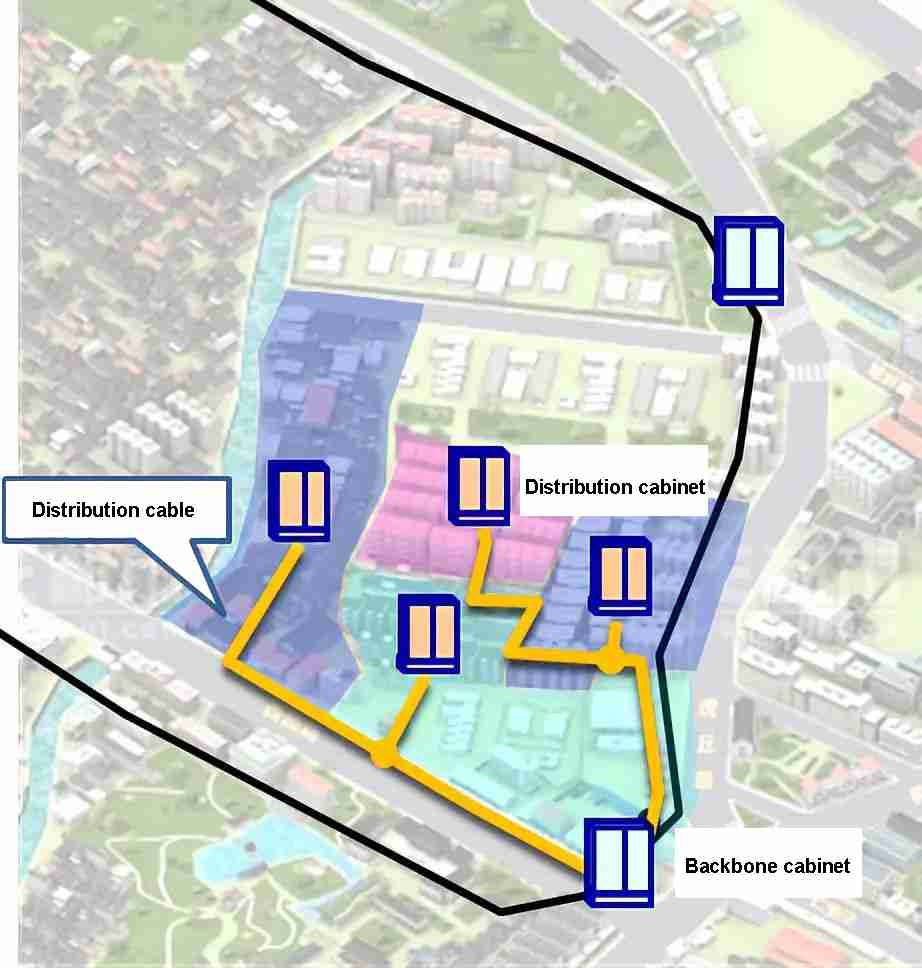
The fiber core terminated in distribution cabinet can only reach the backbone cabinet directly. If you want to connect to the business convergence point, you must jump through the backbone cabinet. Therefore, the wiring /distribution cabinet also called secondary cabinet.
Some experts believe that the community cabinet or building cabinet can be uplinked to the nearest distribution cabinet (level 2), as shown in Figure 4. This will lead to an increase in the overall attenuation of the ODN optical link. So Yingda recommends , the fewer cabinet in the ODN optical link, the better, and should not exceed level 2.
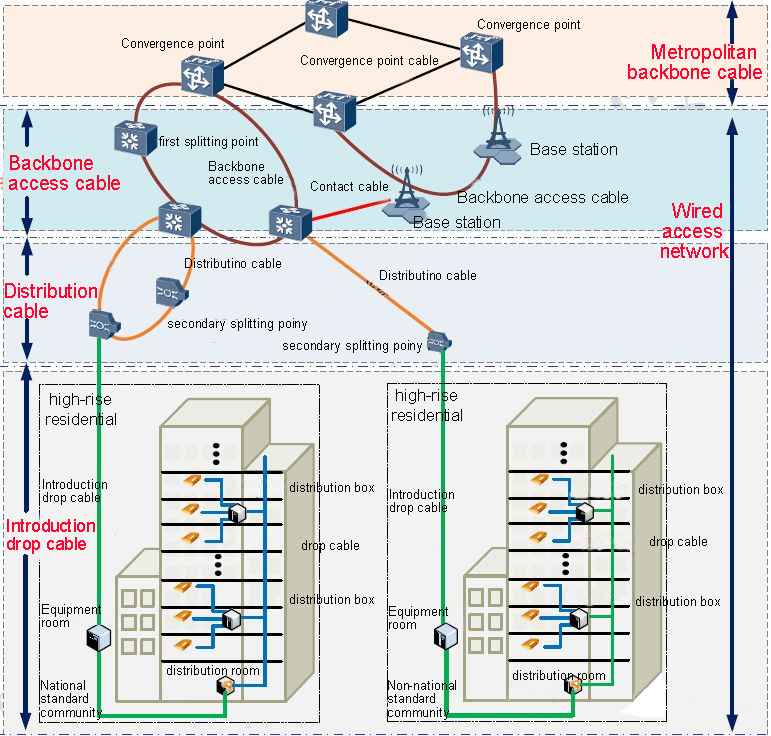
Introduction and Home Section
The introduction section refers to the cable section from the distribution cabinet to the fiber distribution box, and between the fiber distribution boxes. The network structure is mainly tree-shaped and chain-shaped, as shown in Figure 5.
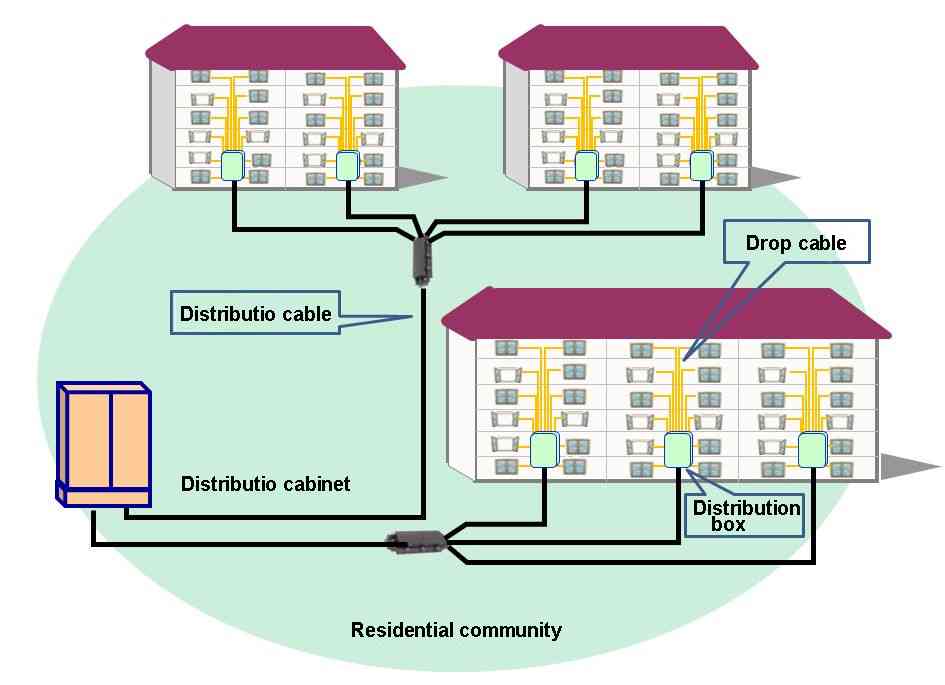
The home section refers to the section of cable from the optical fiber distribution box to the user. It is usually laid point-to-point during installation.
Difference definitions of Industry standards and Yingda
It should be noted that in the industry standards “Broadband Access Engineering Design Specifications” and “Broadband Access Engineering Acceptance Specifications“, the fiber distribution box is defined as the dividing point between the distribution cable and the introduction cable. The optical cable from the distribution box to the user is defined It is the drop cable (for example, the standard name of the covered optical cable is “figure 8 drop cable”).
Regarding the definitions of different cable paragraphs, the differences between the industry standards and this article are shown in Table 1.
Table 1 different definition of industry standard and yingda
| Cable section | Industry standards | Yingda name |
| Central office-truck cabinet | Backbone section | Backbone section |
| truck cabinet~ distribution cabinet | Distribution section | Distribution section |
| Distribution cabinet ~fiber distribution box | Distribution section | Introduction section |
| Fiber distribution box ~ users | Introduction section | Home section |
What is the relationship between distribution cabinet, secondary cabinet, and community cabinet?
The first-level cabinet and the second-level cabinet are distinguished from the fiber core connection relationship between the cabinets and the service convergence point.
The trunk cabinet and the distribution cabinet are distinguished from the connection relationship between the cabinet and the optical cable section.
Residential area cabinet and building cabinet are distinguished from the installation scenarios of wiring cabinets.
The backbone cabinet is the first-level cabinet. When there are only two levels of cabinet in ODN optical link, the residential cabinet and the building cabinet are the wiring cabinet, that is, the second-level cabinets.
What is user optical cable?
The term “user optical cable” appears in the national standard “Engineering Design Code for Fiber-to-the-Home Communication Facilities in Residential Areas and Residential Buildings”. The user optical cable is relative to the operator’s optical cable. It refers to the optical cable section built by the developer from the user access point (the dividing point between the operator’s and developer’s networks) to the user section, as shown in Figure 6. Normally we called it drop cable.

The user access point is generally a distribution cabinet. From the perspective of a complete ODN optical link, the user optical cable generally includes the introduction section and home sections.
FAQ:
What is drop fiber cable?
It is the fiber optic cable will be connected and used in end user access point, and finally will be terminated with fiber optic connectors, and then insert into the ONU OLT routers.
What is the difference between drop cable and distribution cable?
Distribution cable is mainly used after backbone cable to distribute, store, split big capacity cables into smaller capacities it mainly located in streets or buildings or community. But drop cable is mainly use to terminated for end user application ,and it is mainly used in households.
What is the structure of a drop cable?
The mostly popular drop cable is figure 8 type, or buffer-fly shape, there are 2 paralleled reinforced strength member made of FRP or steel wire, with color coded bare fiber 250um in the middle. It can be 1 core, 2core, 4core, or more.
This type of cable mostly used for home horizontally or riser laying, if aerial mount, suggest to use self-supporting drop cable, which has 1 more solid steel wire or FRP messenger wire for better functions.

What are the different types of drop cable?
The drop cable mainly distinguish by the cable structure into below types:
Figure 8 drop cable, self supporting drop cable, flat drop cable and round drop cable.
What drop cable cable dimension can you offer?
Yingda can supply all types of drop cable, like 2.0*3.0mm,2.0*5.0mm, 4.0*7.0mm, 4.4*8.4mm, 2.0*3.0-5.7mm, 1.6*2.0mm, 3.0*6.0mm, many different structures, welcome OEM or ODM.
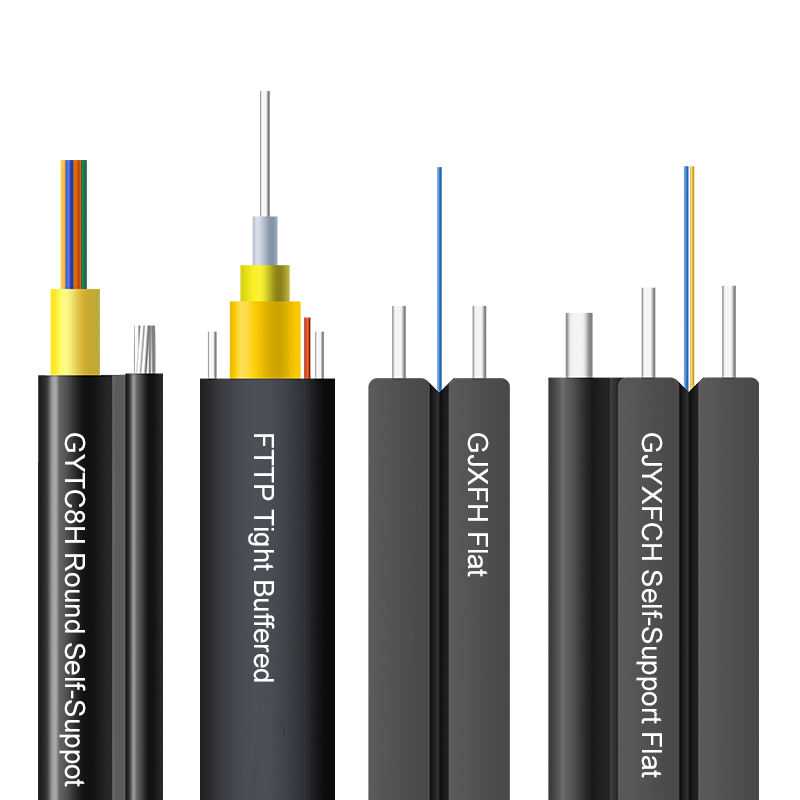
We need outdoor drop cable, what’s your suggestion?
Based on your real application where you use it, and the environment requirement, and better choose with self supporting type or with messengers which is much better for outdoor. Besides, cable structures, suggest to use black color outer sheath, which is anti-uv. White color will change after long time use.

